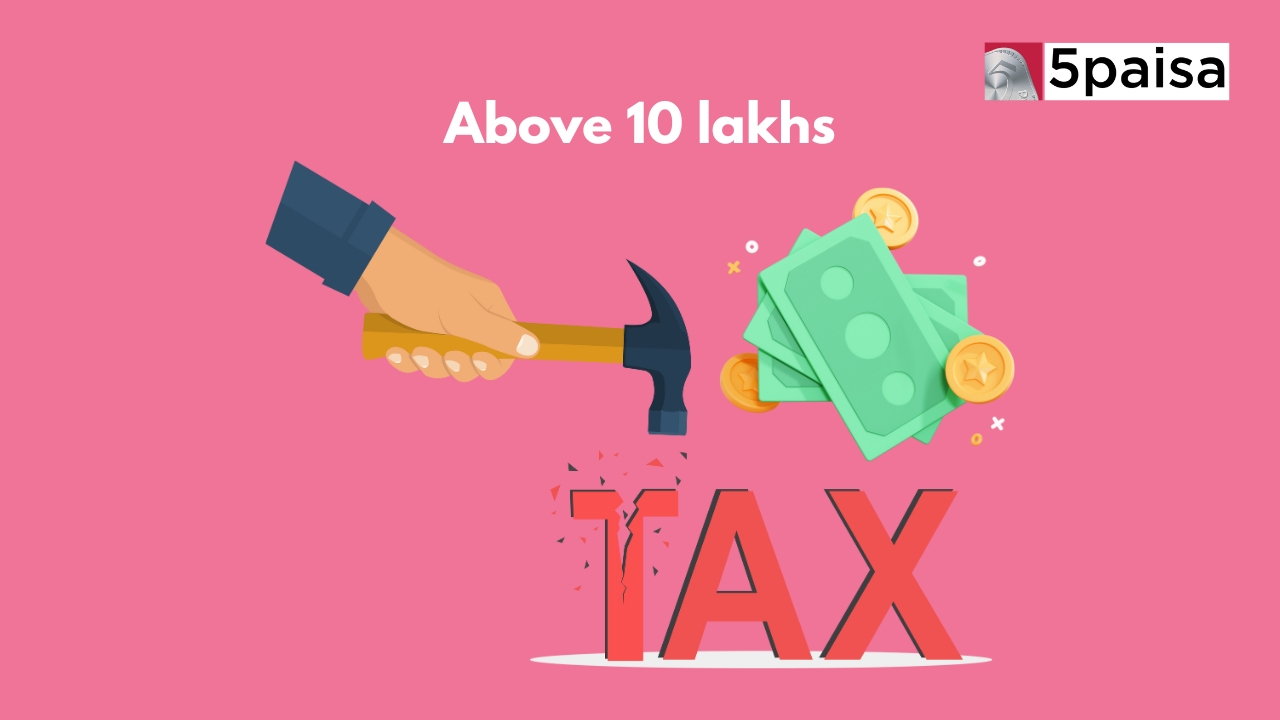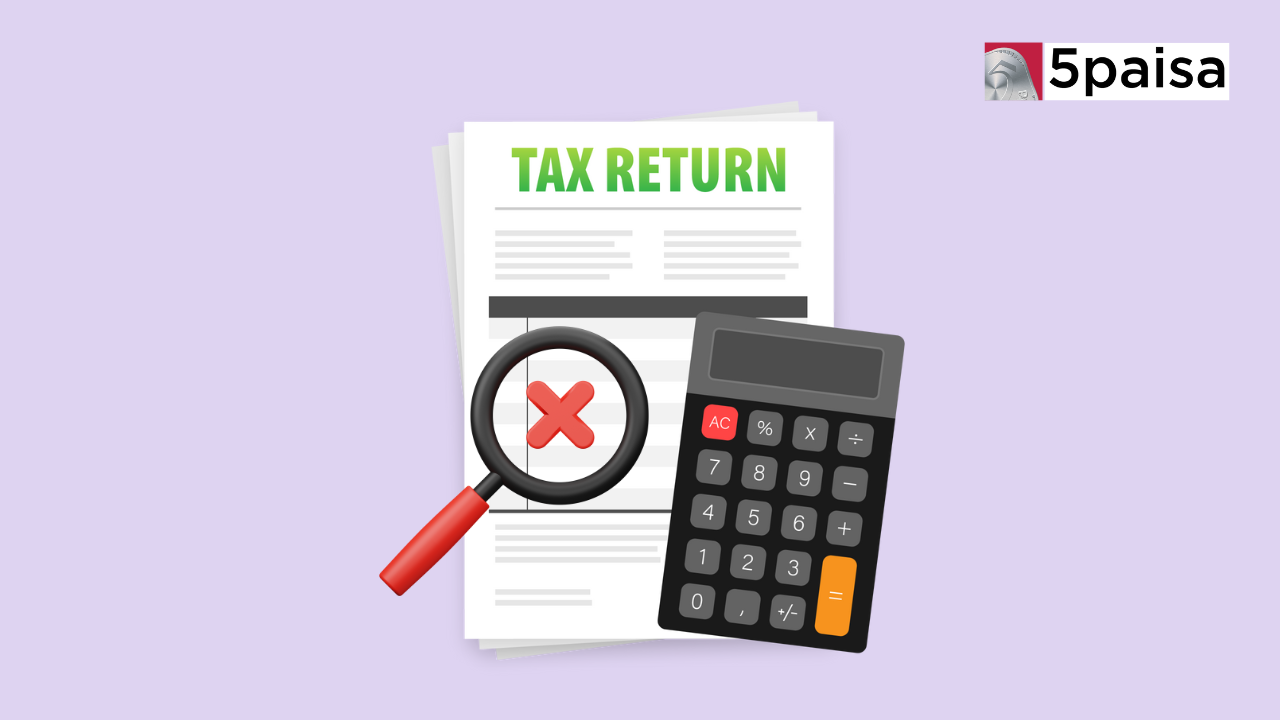How to Register a UPI Complaint Online?
How To Save Tax For Salary Above ₹10 Lakhs?

Last Updated: 27th May 2024 - 10:31 am
Earning a high salary comes with the responsibility of effective tax planning. If your annual income exceeds ₹10 lakhs, it is important to understand the tax implications and explore legal ways to minimise your tax liability.
What Are the Income Tax Slabs in the New Regime vs. the Old Regime?
The Indian government has introduced a new tax regime alongside the existing old regime, allowing taxpayers to choose the best option that suits their financial circumstances. Here's a comparison of the income tax slabs and rates for the Financial Year 2023-24:
| Old Tax Slabs | Old Income Tax Rates | New Tax Slabs | New Income Tax Rates |
| Upto ₹2.5 Lakh | Nil | Upto ₹3 Lakh | NIL |
| ₹2.5 Lakh–₹5 Lakh | 5% | ₹3 Lakh–₹6 Lakh | 5% |
| ₹5 Lakh-₹10 Lakh | 20% | ₹6 Lakh–₹9 Lakh | 10% |
| Above ₹10 Lakh | 30% | ₹9 Lakh–₹12 Lakh | 15% |
| ₹12 Lakh–₹15 Lakh | 20% | ||
| Above ₹15 Lakh | 30% |
How Is Tax Liability Calculated Under The New And Old Tax Regime?
Here's how tax liability is calculated under the new and old tax regimes:
Under the Old Tax Regime: The old tax regime allows taxpayers to claim various deductions and exemptions, which reduce their taxable income. The process of calculating tax liability under the old regime involves the following steps:
● Calculate Gross Total Income: This includes your salary income, income from house property, capital gains, and other sources of income.
● Claim Deductions and Exemptions: Deduct eligible exemptions like House Rent Allowance (HRA), Leave Travel Allowance (LTA), and standard deduction from your Gross Total Income. Then, claim deductions under various sections like 80C (for investments in PPF, EPF, ELSS, etc.), 80D (for health insurance premiums), 80E (for education loan interest), and others that you are eligible for.
● Arrive at Taxable Income: After deducting all eligible deductions and exemptions from your Gross Total Income, you arrive at your Taxable Income.
● Calculate Tax Liability: Apply the relevant income tax slabs and rates to your Taxable Income to determine your tax liability. The old tax regime follows a progressive tax structure, with higher tax rates for higher income levels.
Under the New Tax Regime: The new tax regime, introduced in the Union Budget 2020, provides a simplified tax structure with lower tax rates but fewer deductions and exemptions. The calculation process is as follows:
● Calculate Gross Total Income: Similar to the old regime, you need to calculate your Gross Total Income from all sources.
● Claim Limited Deductions: Under the new regime, you can claim a standard deduction of ₹50,000, employer's contribution to the National Pension System (NPS), and deductions for investments in the Agniveer Corpus. However, most other deductions and exemptions are not available.
● Arrive at Taxable Income: Deduct the eligible deductions from your Gross Total Income to arrive at your Taxable Income.
● Calculate Tax Liability: To determine your tax liability, apply the new tax regime's slabs and rates to your Taxable Income. The new regime offers lower tax rates than the old regime, but the absence of many deductions and exemptions may result in a higher taxable income.
Taxpayers can choose between the old and new tax regimes each financial year, depending on which is more beneficial for their circumstances.
Example On Calculation Of Tax Under New And Old Tax Regime
Let's consider the case of Ms Gupta, who earns a gross salary income of ₹12.5 lakhs. In addition to her salary, she is eligible for certain exemptions and deductions. Under the old tax regime, Ms Gupta can claim an HRA exemption of ₹60,000, an LTA exemption of ₹20,000, and a professional tax deduction of ₹2,400. Furthermore, she has invested in PPF amounting to ₹1.5 lakhs, paid medical insurance premiums of ₹50,000 for her senior citizen parents, and incurred an interest expense of ₹25,000 on an education loan.
The tax calculations under both the old and new tax regimes are as follows:
| Particulars | Old Tax Regime | New Tax Regime |
| Gross Salary Income | ₹ 12,50,000 | ₹ 12,50,000 |
| Less: Exemptions | ||
| HRA Exemption | ₹ 60,000 | Not Applicable |
| LTA Exemption | ₹ 20,000 | Not Applicable |
| Reimbursements | ₹ 0 | Not Applicable |
| Children's Education and Hostel Allowance | ₹ 0 | Not Applicable |
| Less: Deductions under section 16 | ||
| Standard Deduction | ₹ 50,000 | ₹ 50,000 |
| Professional Tax | ₹ 2,400 | Not Applicable |
| Income under the Head Salary | ₹ 11,17,600 | ₹ 12,00,000 |
| Less: Deductions under Chapter VI-A | ||
| Section 80C (PPF) | ₹ 1,50,000 | Not Applicable |
| Section 80D (Medical Insurance Premium) | ₹ 50,000 | Not Applicable |
| Section 80E (Education Loan Interest) | ₹ 25,000 | Not Applicable |
| Net Taxable Income | ₹ 8,92,600 | ₹ 12,00,000 |
| Income Tax (Including Surcharge and Cess) | ₹ 94,661 | ₹ 93,600 |
| Less: Rebate under Section 87A | ₹ 0 | ₹ 0 |
| Tax Liability (Including Cess) | ₹ 94,661 | ₹ 93,600 |
As we can see that under the old tax regime, Ms Gupta can claim various deductions and exemptions, reducing her taxable income to ₹8,92,600. This resulted in a tax liability of ₹94,661, including applicable surcharges and cesses.
On the other hand, under the new tax regime, Ms Gupta is entitled to a standard deduction of ₹50,000, but she cannot claim any other deductions or exemptions. Consequently, her taxable income stands at ₹12,00,000, leading to a tax liability of ₹93,600, including surcharges and cesses.
Tips to Save Tax on a ₹10 Lakhs Salary
If your Salary exceeds ₹10 lakhs, you can utilise various strategies to minimise your tax liability:
1. Choose the Right Tax Regime: Evaluate your financial situation and determine which tax regime (old or new) would be more beneficial for you based on the available deductions and exemptions.
2. Maximise Section 80C Deductions: Invest in tax-saving instruments like the Equity Linked Savings Scheme (ELSS), Public Provident Fund (PPF), National Savings Certificate (NSC), and life insurance policies to claim deductions up to ₹1,50,000 under Section 80C.
3. Claim House Rent Allowance (HRA) Exemption: If you live in a rented accommodation, you can claim the HRA exemption under the old tax regime, significantly reducing your taxable income.
4. Utilise Health Insurance Premium Deductions: Under Section 80D, you can claim deductions on health insurance premiums paid for yourself, your spouse, dependent children, and parents.
5. Optimise Loan Deductions: If you have taken a home or an education loan, you can claim deductions on the interest paid under Sections 24(b) and 80E, respectively.
6. Consider Other Deductions: Explore other deductions available under various sections, such as donations to charitable trusts (Section 80G), investments in the National Pension System (Section 80CCD), and expenses incurred for the treatment of disabled dependents (Section 80DD).
Exemptions And Deductions Under New And Old Tax Regime
While the new tax regime offers a simplified tax structure, the old one provides numerous exemptions and deductions. Here's a comparison:
| Deduction/Exemption | Old Tax Regime | New Tax Regime |
| Section 80C (PPF, EPF, ELSS, etc.) | Up to ₹1,50,000 | Not Available |
| Section 80D (Health Insurance Premium) | ₹25,000 (Self and Family) / ₹50,000 (Senior Citizens) | Not Available |
| Section 80E (Education Loan Interest) | Available | Not Available |
| Section 80G (Donations) | Available | Not Available |
| House Rent Allowance (HRA) | Exempt up to certain limits | Not Available |
| Leave Travel Allowance (LTA) | Exempt up to certain limits | Not Available |
| Standard Deduction | ₹ 50,000 | ₹ 50,000 |
| Employer's Contribution to NPS | Exempt up to 10% of salary | Exempt up to 10% of salary |
| Investment in Agniveer Corpus | Not Available | Exempt |
Conclusion
Saving tax on a high salary requires careful planning and utilisation of available deductions and exemptions. By understanding the nuances of the new and old tax regimes, exploring tax-saving investment options, and optimising your financial decisions, you can legally minimise your tax liability and maximise your savings.
Frequently Asked Questions
Can I Utilise Any Government Schemes Or Policies To Minimise Tax If My Salary Is Above ₹10 Lakhs?
How Can I Make Use Of Section 80C To Save Tax If My Salary Exceeds ₹10 Lakhs?
How Can I Optimise My Investments To Reduce Tax Liability If My Salary Exceeds ₹10 Lakhs?
- Flat ₹20 Brokerage
- Next-gen Trading
- Advance Charting
- Actionable Ideas
Trending on 5paisa
Personal Finance Related Articles
Disclaimer: Investment in securities market are subject to market risks, read all the related documents carefully before investing. For detailed disclaimer please Click here.
 5paisa Research Team
5paisa Research Team
 Sachin Gupta
Sachin Gupta




